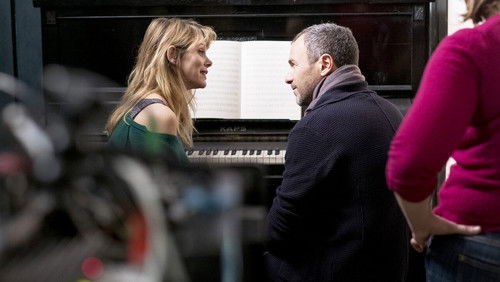Yeonpyeong haejeon (2015)
34KYeonpyeong haejeon: Directed by Hak-sun Kim. With Mu-Yeol Kim, Jin Goo, Hyun-Woo Lee, Kim Dong-Hee. The movies follows the incident known as the second battle of Yeonpyeong which happened in 2002.
“Northern Limit Line is a portrayal of the 2002 u0026quot;Second Battle of Yeonpyeongu0026quot; (the first having been a somewhat similar encounter a few years earlier) in which North Korean warships attacked two South Korean patrol boats in disputed waters on the west coast of Korea. (The title refers to the maritime boundary that (in the US and ROK view) was established in the 1953 armistice, but which is not accepted by the DPRK.) Some of the external reviews complain that the film is bifurcated — the first part establishing the personalities and interactions of the crew, and the second part dealing with the battle itself. This, while accurate, seems to miss the point: The message of the film is that a nationu0026#39;s battles are not fought by either flawless heroes or by oppressed victims. Rather the film presents a shipu0026#39;s crew that is both a proud and disciplined unit controlled by a hierarchical order of command and a group of individuals with their own ambitions, dreams, fears, friendships, and dislikes. When a unauthorized party or watching a soccer game on an unauthorized link is interrupted by a general stations drill, the sailors show they are displeased, but they go to their stations. In fact, my sense was that, in contrast to the reviewersu0026#39; opinion it is the first part of the film, not the second to which non-Koreans and those of us who have never served in the military should pay most attention. The concept of showing the character of relationships in a military unit is pretty much a standard war movie device, but what makes this special is that the relationships are distinctively Asian. True, there are resemblances to how any collection of young men (and int the film, also a young female officer) in a military unit move between the highly structured military role and being typical late adolescents. But in a way that is hard to define, but comes across clearly, there is a special Asian (and presumably particularly Korean) character to the interrelationships — the way they talk, the things they seek, what annoys them, the way they trick the system in which they nonetheless take pride. In my view, without that establishment of context, the second part –the battle itself – would be just another action sequence and much less involving for the viewer — especially, one suspects, for a Korean audience. We come to care deeply about what happens to these kids when the North Korean ship turns a routine encounter at sea into a pitched battle. The combat scenes are presented with a candor and explicitness about what war is really like– the chaos, the terror, the determination, the failures and bitter costs — that few if any American war flicks would risk. In particular, I have seldom seen a film that is as uncompromisingly honest about what battle wounds look like– would an American film show, as Northern Limit Line does –the severed arm of one of the central characters lying next to the hemorrhaging stump? Certainly, the film takes a unequivocally pro-South Korea perspective — it is quite explicitly a tribute to the skill and dedication of the nationu0026#39;s navy. But it is both brutally honest about what war means and, in a rather more low key way, critical of the civilian population who are cheering at a big soccer match while the battle goes on. That the civilian donu0026#39;t know about the battle and pay due honor to their nationu0026#39;s soldiers afterward makes their innocent detachment from the sacrifices of the sailors who are fighting all the more poignant.”









